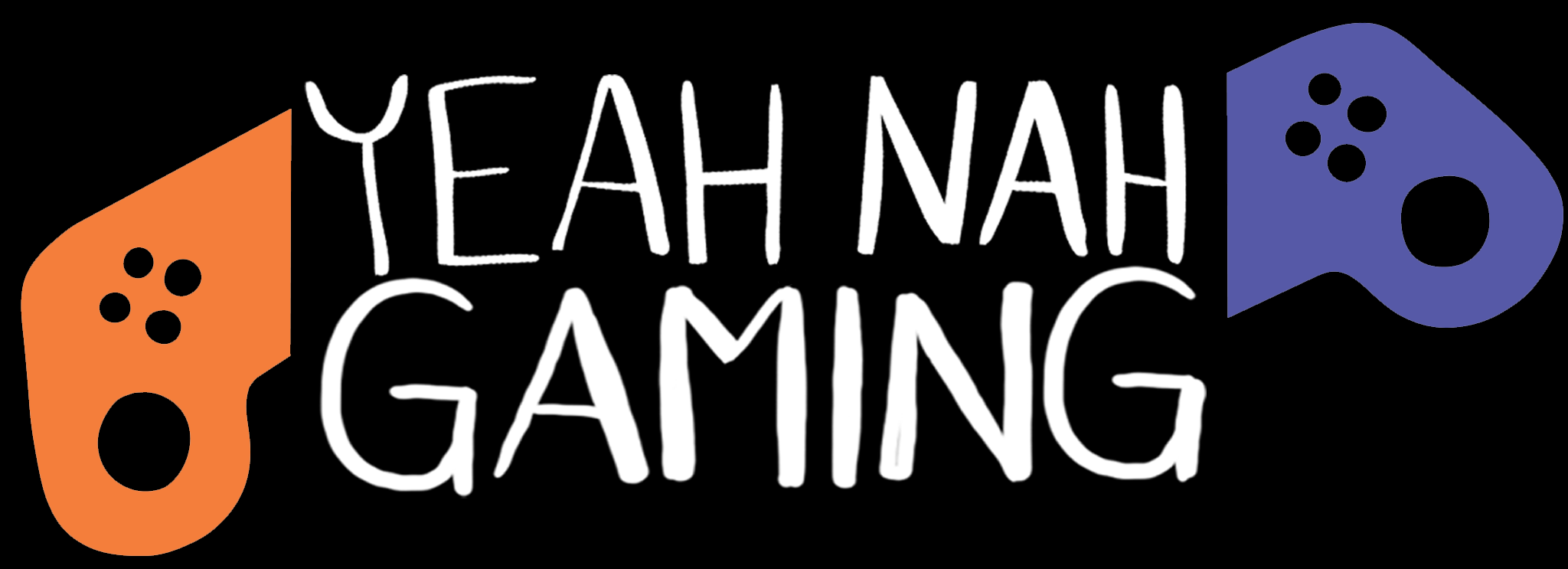A Warriors roguelike to ride the genre’s post-Hades popularity was probably inevitable—if anything, I’m surprised it didn’t happen sooner. Still, that game is here now in the form of Warriors Abyss, an action roguelike that sends Dynasty Warriors and Samurai Warriors characters into the depths of hell. It’s a fun game full of fan-favourite characters, but also one that falls short of potential.
Let’s start with the good stuff. Warriors Abyss takes the basic structure of an action roguelike—fight through a series of levels, collecting randomised power-ups along the way, and hopefully kill the big bad at the end of each run—and finds clever ways to give it a Warriors touch. The moment-to-moment action is pure musou: your chosen character against hordes of hundreds of demonic foes at a time, with an assortment of different attack combos (the same as their Dynasty Warriors 8 and Samurai Warriors 4 counterparts) and super-powerful Musou attacks.
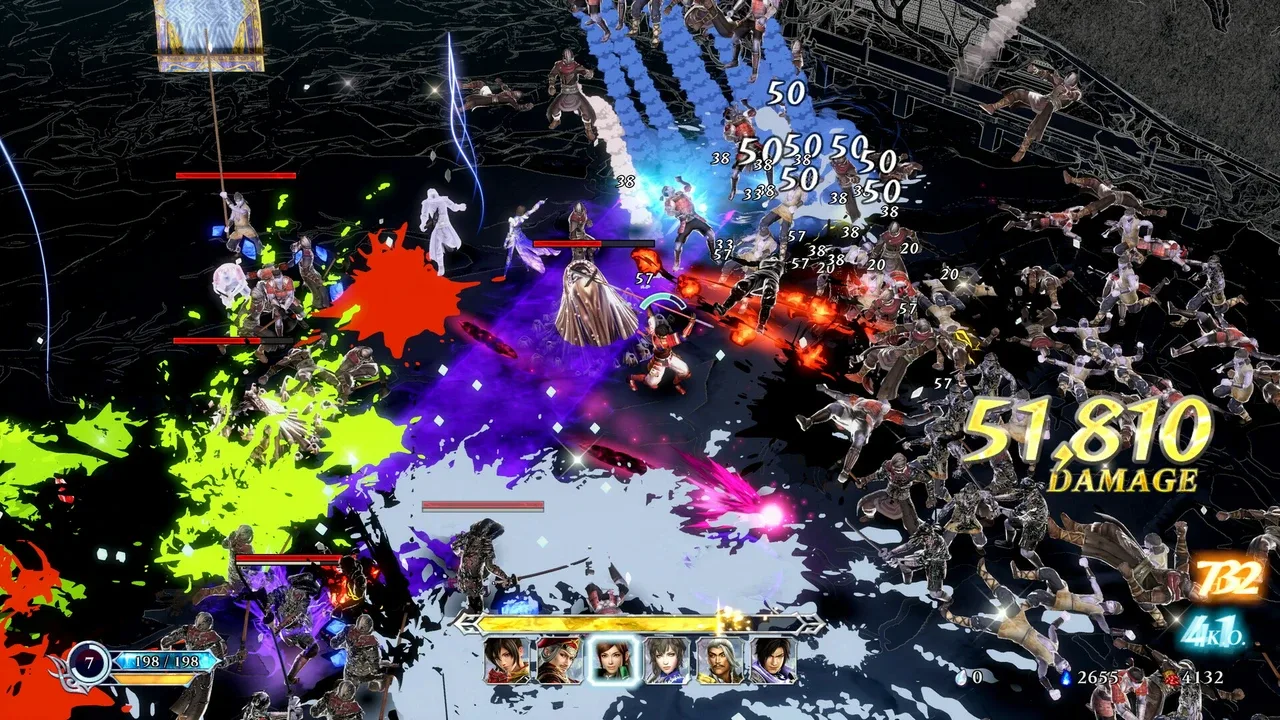
A huge roster of playable characters—over 100—is to be expected, but where Abyss stands out is in making that roster also act as your main source of power-ups. After almost every successful wave, you can recruit one (a sometimes more) of your unlocked characters as an ally, gaining passive buffs and new abilities in the process. Up to six can also be set as summonable heroes, tagging in for special attacks at the end of your character’s combos. In Warriors Abyss, you get stronger by amassing an army.
The way this works is that each hero has a set of emblems. Some of these are standard stat buffs that provide passive effects based on the number of each type you have—Vigor emblems generally increase attack power and ability to interrupt foes with attacks, Speed emblems increase movement speed and dodge effectiveness, and so on. Others are elemental emblems, applying elemental damage and status effects with increasing efficacy. Every character has at least one ability or element emblem, most have two, and some have more than that—these form the foundation of each build and strategy.
The more interesting ones are the character trait emblems, simple words or phrases describing a hero’s personality, allegiances, unique strengths, and so on. Oda Nobunaga, for example, has “Oda”, “Daimyo”, “Talent”, “Three Heroes”, and “Master Gunner”. While these emblems don’t provide any direct benefit on their own, they are the key to activating unique special effects for each character—both the player character and any recruited allies. Using Nobunaga as the example again, as the player’s character, he gets a 7% damage buff for each “Oda” emblem you collect; as an allied hero, he increases attack power for Oda heroes by 70%, once you collect seven such emblems to activate the effect. There is a huge number of these traits, a wide variety of effects tied to them, and some interesting synergies between them.
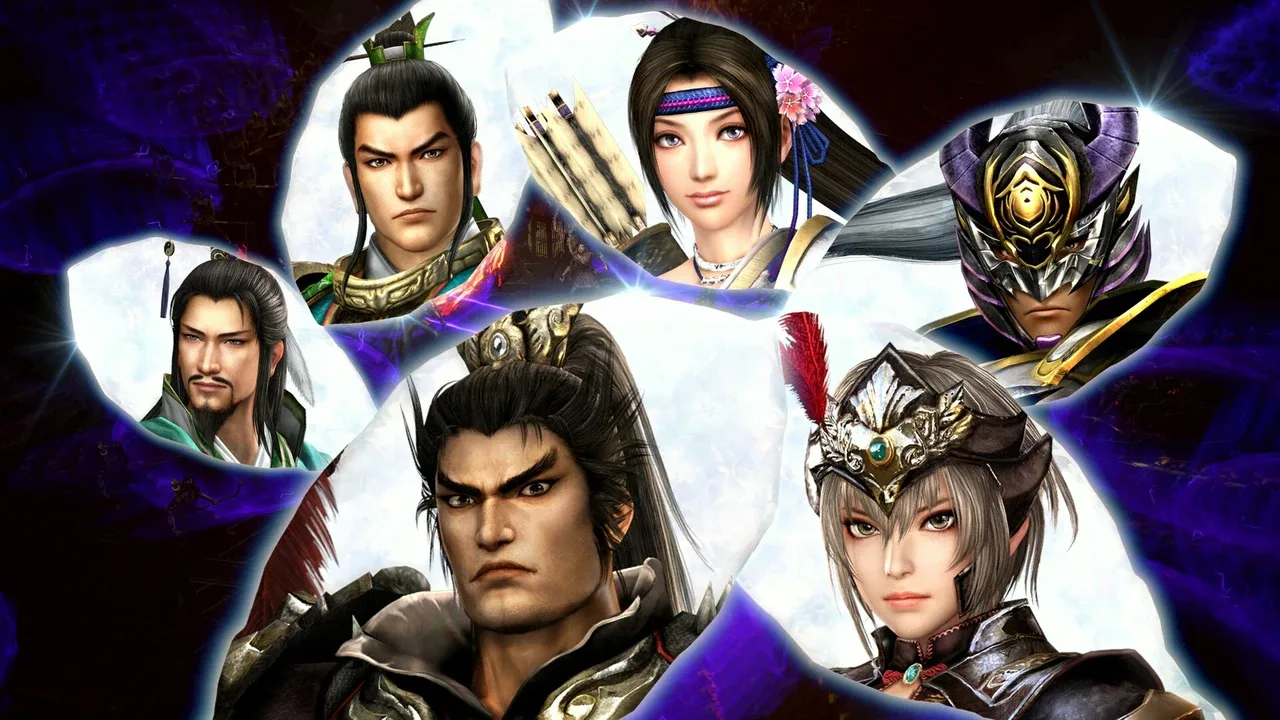
The combination of these different emblems creates a simple, effective build strategy for most runs: look at what your chosen hero’s special abilities are, aim to recruit characters that match, and try to stack a good balance of basic stats and elements at the same time.
That strategic simplicity is both Warriors Abyss’ strength and its weakness. Once you understand how the pieces fit together, it’s not hard to create an effective build for any character. Some heroes are much stronger than others, but all are viable just because of the way core game systems can overcome individual flaws. But it also makes the game feel somewhat homogenised; there’s a clear optimal strategy for each character, and it’s almost always some variation of “collect other characters with the same emblems”. There are a few characters that stand out a little bit, but that’s usually due to an unconventional weapon or attacks rather than being designed around an unorthodox build. Likewise, there are some unusual builds that can be very effective by breaking this emblem-driven mold, but they’re much harder to line up all the right pieces for.
As with most roguelikes, Warriors Abyss is designed around controlled randomness. After each wave you get a power-up of some sort, and the choice of one of three power-ups as the prize for the next wave. Usually at least one of these will be a sapling tree, which lets you pick one of three randomly-selected heroes to recruit, but there are sometimes other options, like temporary currency to spend at mid-run shops, and health recovery, meta currency (used to unlock new characters and permanent buffs). Some sapling trees pull from the full pool of unlocked heroes, others are limited to those with a certain emblem.
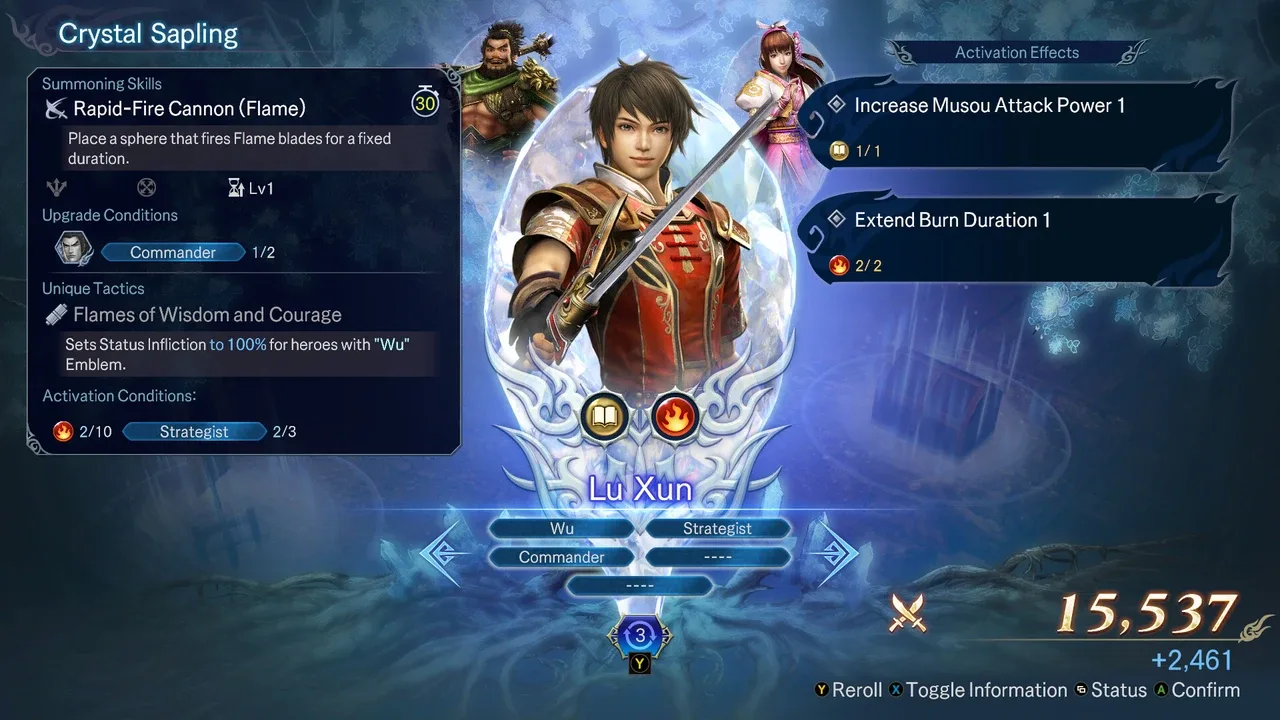
The problem is that the options are wildly imbalanced. Getting to recruit a new hero is always a very good choice at least, and often an excellent one if you get a tree limited to a specific emblem you’re hunting. Getting a health boost is almost never a good idea, given how many other ways there are to heal up and the opportunity cost of not getting another ally. Shops can be very good, but they’re fairly rare and entirely random, which makes temporary currency unreliable—picking currency buffs isn’t just gambling on shops having stuff you want, but gambling on shops appearing at all.
This setup a decent amount of control over the randomness in the course of a full run—perhaps too much. Wave rewards that let you recruit new allies are just outright better than other options in almost every scenario, and you get a lot of chances to narrow the selection pool to whatever emblems you’re hunting. This is part of why optimal builds feel a little stagnant—they’re generally not hard to achieve.
That lack of variety is made much, much worse by the level structure in Warriors Abyss. Some minor (and inconsequential) variations on level layout aside, every run is exactly the same in terms of what you’re up against. The enemies you fight are the same, just in greater numbers. Each run has the same bosses in the same places, fought with a strategy that doesn’t really vary from character to character: dodge its telegraphed attacks and do as much damage as you can. Successful runs let you kick up the difficulty for subsequent attempts, but all that does is make enemies stronger and make shops—which are unreliable to start with—less likely to appear. Harder levels don’t alter playstyle in any way, they just narrow the room for error.
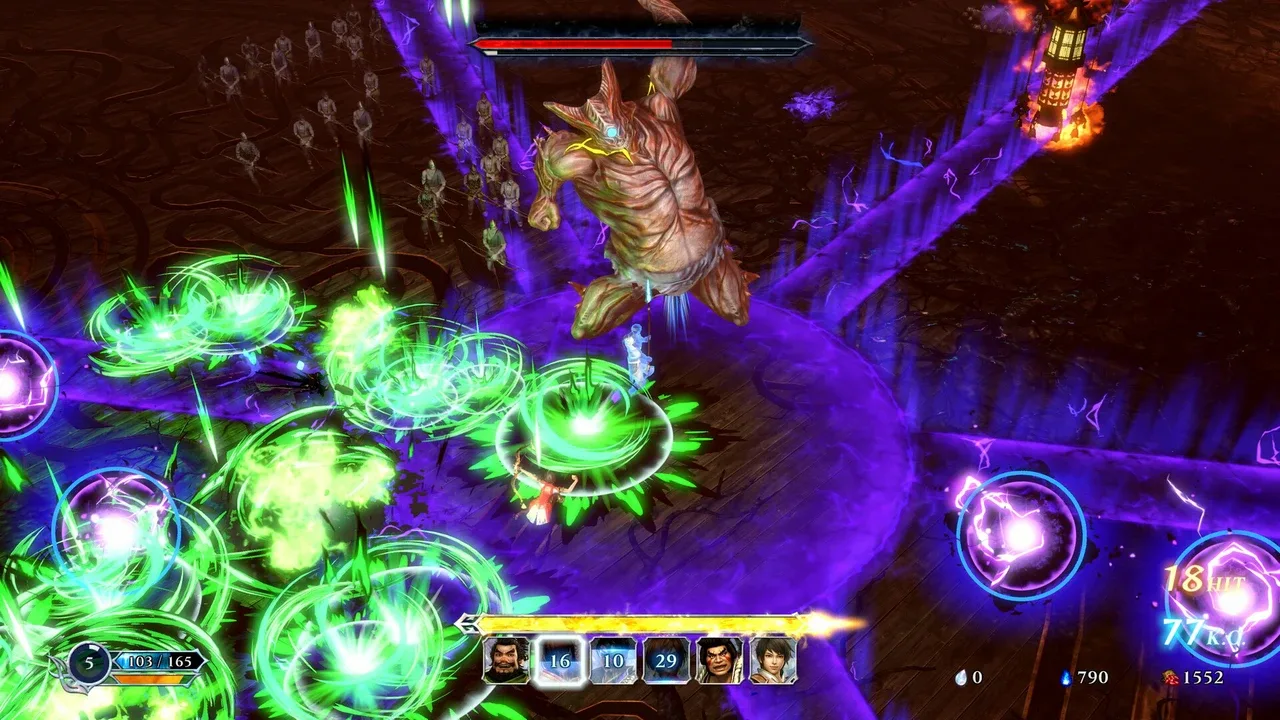
And that’s Warriors Abyss’ biggest flaw: it makes repeat playthroughs samey and dull, which is exactly what a good roguelike needs to avoid. The best examples of the genre make each run feel dynamic, and create excitement out of adapting to different rolls of the dice. A good roguelike becomes more exciting as the illusion drops and you start to understand the patterns driving the whims of fate, because that opens new layers of strategy and new possibilities. Unfortunately, this is rarely the case in Warriors Abyss.
That’s a shame, because there’s so much potential here, especially in its unique approach to power-ups. The way Warriors Abyss ties power-ups to its roster of heroes and the synergies between them is a clever move, and one that lays the foundation for a fantastic roguelike. More boss variety and an upgrade loop that did more to force you to adapt to suboptimal picks would turn that foundation into something memorable. Instead, what you get is a simple roguelike button masher that’s fun for short bursts but runs out of steam quicker than it should.
